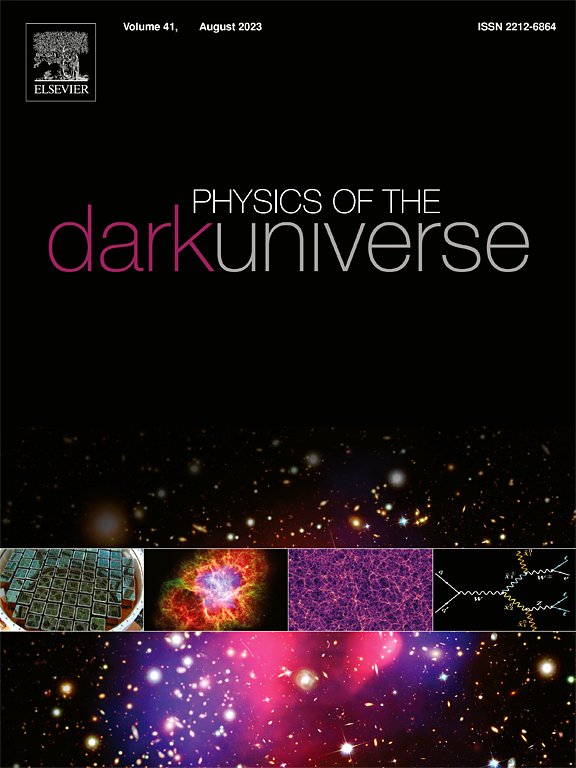带洛伦兹对称性破缺的带电卡尔布-拉蒙黑洞周围弦的混沌动力学
IF 6.4
2区 物理与天体物理
Q1 ASTRONOMY & ASTROPHYSICS
引用次数: 0
摘要
本文研究了靠近带电卡尔布-拉蒙黑洞边界的相对论弦的动力学。利用李雅普诺夫指数作为诊断工具,我们证明了弦的发展是极其混沌的,并且经常超过Maldacena-Shenker-Stanford约束。我们的研究还表明,弦的能量和旋转动量是决定其动态特性的关键。随着洛伦兹对称破缺参数的增大,视界半径减小,表面重力增大。此外,当其他参数固定且角动量L变化时,观察到对于内部点,增加L会导致λ2−κ2的值减小,而对于外部点,增加L会导致λ2−κ2的值增大。同样,当L等参数保持不变,而改变能量E时,其行为也有所不同:对于内部点,增加E会导致λ2−κ2升高,表明混沌行为更强;相反,对于外部点,E的增加导致λ2−κ2的减少,表明有满足Maldacena-Shenker-Stanford边界的趋势。此外,我们发现在外部点的情况下,更高的能量可以抑制混沌行为,这可以通过Lyapunov指数的下降来证明。这些发现有助于更深入地理解混沌测地线和洛伦兹对称违反在修正重力框架中的作用。本文章由计算机程序翻译,如有差异,请以英文原文为准。
Chaotic dynamics of string around a charged Kalb–Ramond black hole with Lorentz symmetry breaking
The dynamics of a relativistic string close to a charged Kalb-Ramond black hole’s boundary is examined in this article. We show that the development of the string is extremely chaotic and often surpasses the Maldacena–Shenker–Stanford constraint, using the Lyapunov exponent as a diagnostic instrument. Our study also shows that the string’s energy and rotational momentum are crucial in determining its dynamic properties. By increasing the Lorentz symmetry-breaking parameter, the event horizon radius decreases, while the surface gravity increases. Furthermore, when all other parameters are fixed and the angular momentum is varied, it is observed that for inner points, increasing leads to a decrease in the values of , whereas for outer points, increasing results in an increase in . Similarly, when and other parameters are kept constant and the energy is varied, the behavior differs: for inner points, increasing causes to rise, indicating stronger chaotic behavior; in contrast, for outer points, increasing leads to a decrease in , suggesting a tendency toward satisfying the Maldacena–Shenker–Stanford bound. Furthermore, we find that a higher energy in the case of outer points suppresses chaotic behavior, as evidenced by a decreasing Lyapunov exponent. These findings contribute to a deeper understanding of chaotic geodesics and the role of Lorentz-symmetry violation in modified gravity frameworks.
求助全文
通过发布文献求助,成功后即可免费获取论文全文。
去求助
来源期刊

Physics of the Dark Universe
ASTRONOMY & ASTROPHYSICS-
CiteScore
9.60
自引率
7.30%
发文量
118
审稿时长
61 days
期刊介绍:
Physics of the Dark Universe is an innovative online-only journal that offers rapid publication of peer-reviewed, original research articles considered of high scientific impact.
The journal is focused on the understanding of Dark Matter, Dark Energy, Early Universe, gravitational waves and neutrinos, covering all theoretical, experimental and phenomenological aspects.
 求助内容:
求助内容: 应助结果提醒方式:
应助结果提醒方式:


